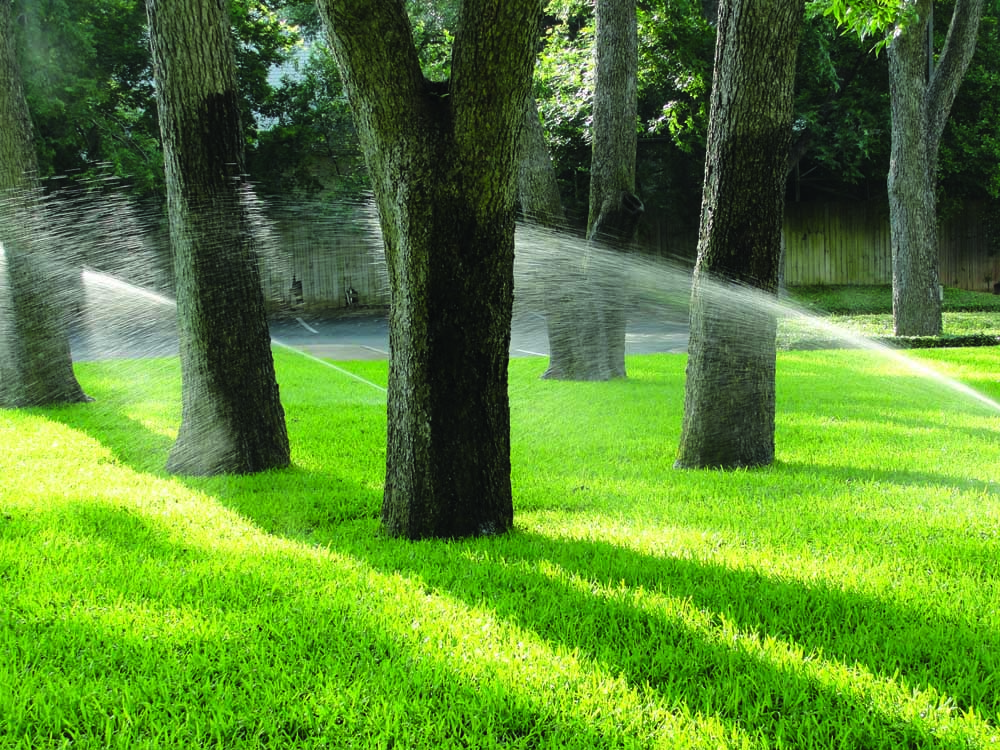Lawn Watering
Published 11:04 am Wednesday, June 3, 2020

- Most East Texas homeowners with automatic sprinkler systems water too often, leading to increased disease and wasted water.
Water is a limited resource in Texas, and it will become more limited as the population grows. Homeowners can conserve a significant amount of water with no loss in grass quality by learning to water their lawns properly. Most homeowners drastically over-water their lawns. Watering too frequently can harm lawn quality more than under-watering. To establish an irrigation plan for your lawn, consider the soil type, grass variety, management practices, and environmental conditions.
The type of turfgrass you have determines how drought tolerant it is. Being from Africa, Bermudagrass is the most drought-tolerant, followed by zoysiagrass, then centipede and St. Augustine which require the most water.
Trending
The time of year also influences irrigation needs. During the summer, when temperatures are high and days are long, lawns generally need supplemental watering. As a general rule, lawns in East Texas need one inch of water, applied once a week during the months of June, July, and August only. That’s a total of only twelve applications a year. The rest of the year when it’s not so hot, our normal rainfall generally sustains them.
Rather than watering on the same schedule each week, adjust your watering schedule according to the weather. Irrigate deeply. Then wait until the grass begins to show signs of drought stress before watering again. Symptoms of drought stress include grass leaves turning a dull, gray-green color, leaf blades rolling or folding, and footprints that remain in the grass after walking across the lawn. To time watering properly, look for the area of the lawn that shows water stress first. Water the entire lawn when that area begins to show symptoms. A lawn that is watered deeply should generally be able to go 5 to 8 days between waterings. Established lawns with deep, extensive root systems can be watered less often.
Early morning is the best time to water. Wind and temperatures are usually the lowest of the day, and water pressure is generally good. That allows water to be applied evenly and with little loss from evaporation. Watering late in the evening, or at night, causes leaves to remain wet for an extended period of time, which increases the chance for disease, especially brown patch and gray leaf spot on St. Augustine.
Thoroughly wet the soil to a depth of 6 inches with each watering. Shallow watering produces weak, shallow-rooted grass that is more susceptible to drought stress. Soil type, sprinkler style and water pressure determine how much water is needed to wet the soil to a depth of 6 inches and how long a sprinkler must run. Baby food jars, tuna fish cans, or similar containers can be spaced around the lawn to see how much water is being applied and a hole dug with a sharp shooter shovel will expose how deep the water is penetrating. From personal observation, most homeowner water too frequently and don’t apply enough water with each application.
Greg Grant is the Smith County horticulturist for the Texas A&M AgriLife Extension Service. He is author of Texas Fruit and Vegetable Gardening, Heirloom Gardening in the South, and The Rose Rustlers. You read his “Greg’s Ramblings” blog at arborgate.com, and read his “In Greg’s Garden” in each issue of Texas Gardener magazine (texasgardener.com). More research-based lawn and gardening information from the Texas A&M AgriLife Extension Service can be found at aggieturf.tamu.edu, aggie-horticulture.tamu.edu, and smith.agrilife.org.






